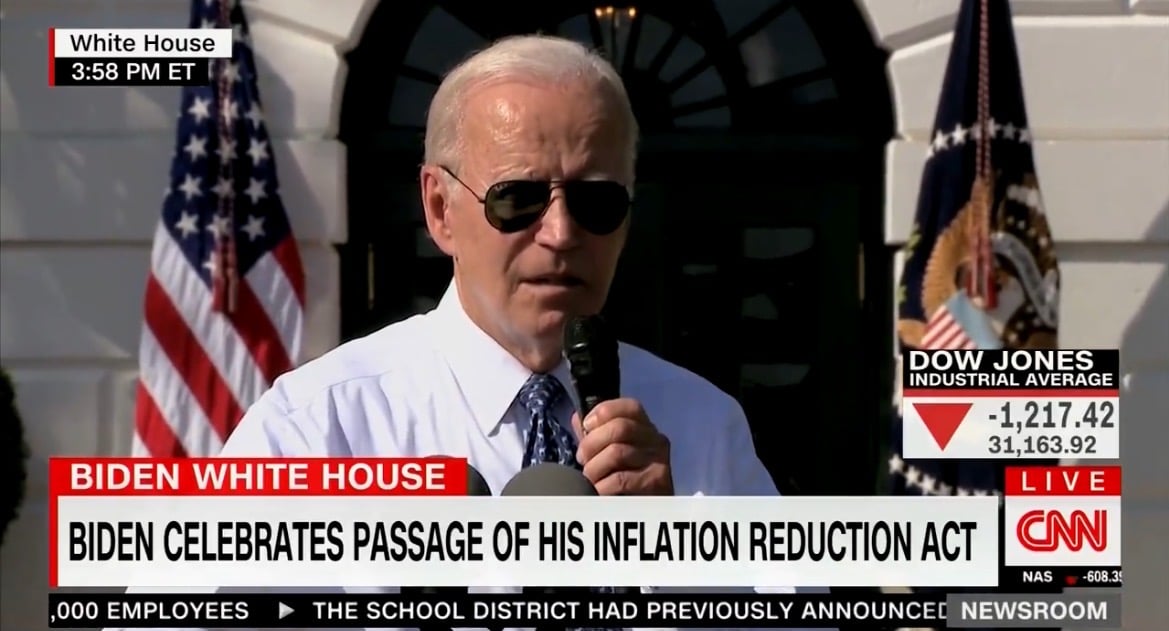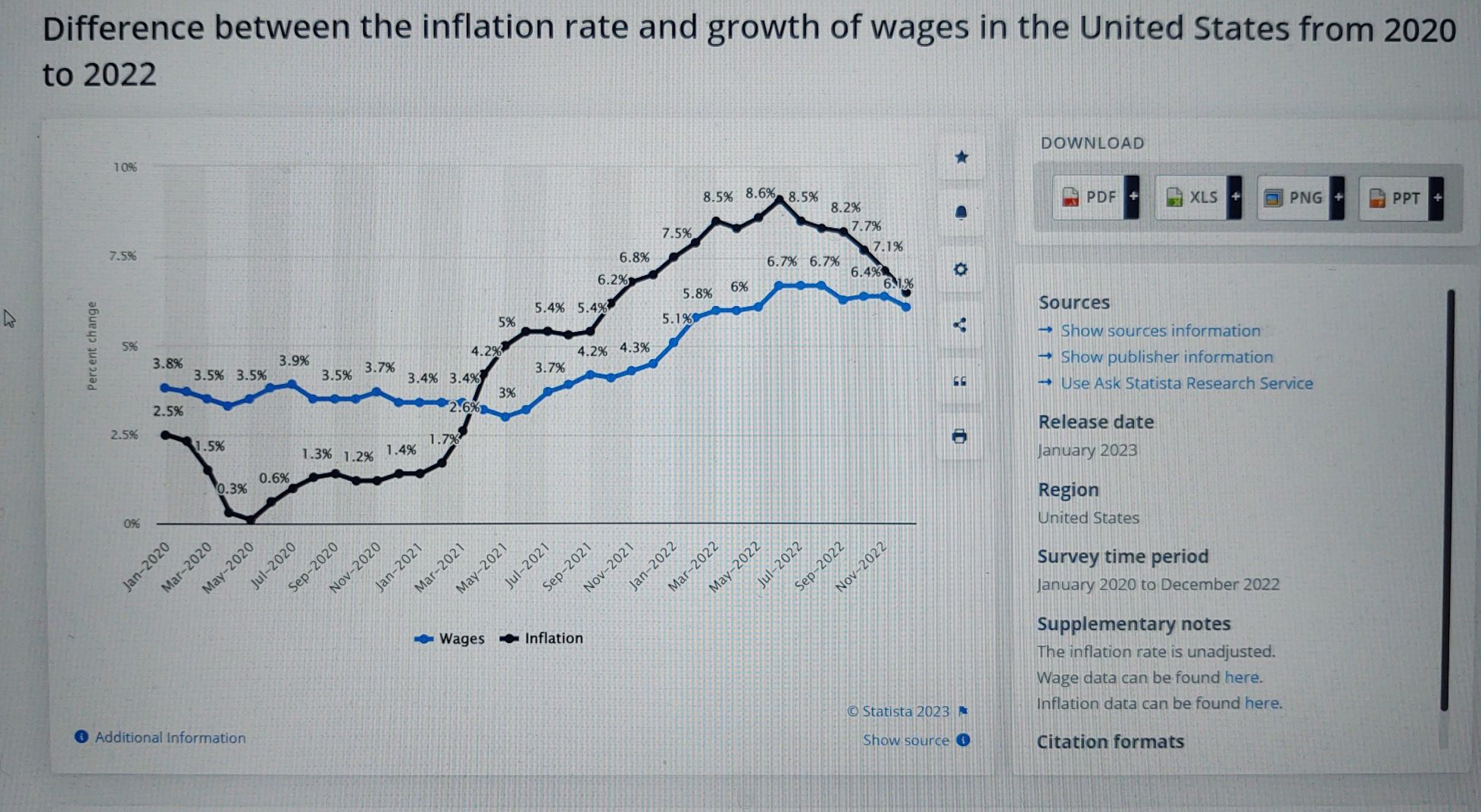The US Department of Agriculture recently released a report forecasting food inflation to remain elevated at 7.1 percent for 2023, a modest improvement from 2022’s 9.9 percent increase. Prices of some staple foods are forecast to rise by close to ten percent or better this year, while others are forecast to decline slightly. Forecasts range from 4.2 percent to 10.1 percent increase in food prices.
 File screenshot, September 2022.
File screenshot, September 2022.
Wages haven’t kept up with overall inflation since Joe Biden took office in 2021 as this chart of statistics shows:

Wages have worsened against food inflation and will likely fail to keep up in 2023. Recipients of SNAP benefits (Supplemental Nutrition Assistance Program, formerly food stamps) will see a generous 12.5 percent increase for 2023. Social Security recipients will increase by 8.7 percent.
Running: Judicial coup: Biden is filling the court with radical judges who will put politics before the law
Excerpts from the USDA report released on January 23:
… In 2022, food prices rise by 9.9 percent. The cost of meals at home increased by 11.4 percent, while the cost of meals away from home increased by 7.7 percent. All food price categories tracked by the US Department of Agriculture (USDA), Economic Research Service (ERS) rose more than 5 percent. After the highly pathogenic avian influenza (HPAI) outbreak, egg prices rose the most (32.2 percent) of any category tracked by ERS between 2021 and 2022. Usually declines from the peak price in November 2021. Eleven food-price categories increased by more than 10 percent, including fats and oils (18.5 percent), poultry (14.6 percent), other meats (14.2 percent), cereals and bakery products (13.0 percent), other foods ( 12.7 percent), dairy products (12.0 percent), processed fruits and vegetables (12.0 percent), alcoholic beverages (11.0 percent), and sugar and sweets (10.4 percent). All food categories grew faster than their historical average rates and the 20-year average inflation rate increased for all food categories.
Food prices are expected to rise more slowly in 2023 than in 2022 but still above historical average rates. In 2023, all food prices are forecast to increase by 7.1 percent, with a forecast range of 4.2 to 10.1 percent. Food-at-home prices are forecast to increase by 8.0 percent, with a prediction interval of 4.5 to 11.7 percent. Food away from home prices are forecast to increase by 8.2 percent, with a forecast range of 6.7 to 9.7 percent.
Retail egg prices rose 11.1 percent in December 2022 and reached 59.9 percent over December 2021 prices. Ongoing outbreaks of HPAI continue to deplete the U.S. egg-layer flock as well as poultry flocks. This decrease is expected to increase wholesale and retail egg prices in the coming months. The HPAI outbreak has contributed to soaring egg and poultry prices as more than 57 million birds, 300 commercial flocks and 47 states have been affected. The price implications of the outbreak will be closely monitored. Egg prices are forecast to increase by 27.3 percent in 2023, with a prediction interval of 6.9 to 52.0 percent. This wide forecast interval reflects the volatility of retail egg prices.
Prices are expected to continue to increase for eight additional food categories that experienced consistent growth throughout 2022. In 2023, prices are predicted to increase for other meats (12.8 percent), dairy products (8.0 percent), fats and oils (16.5 percent), processing. Fruits and vegetables (9.6 percent), sugar and sweets (10.6 percent), cereals and bakery products (12.0 percent), alcoholic beverages (8.7 percent), and other foods (6.8 percent). The prediction interval for each of these categories is strictly above zero.
Price reductions are expected for all three price categories. Beef and veal prices are forecast to decline by 1.8 percent in 2023, with a prediction interval of -10.4 to 8.0 percent; Pork prices are forecast to decline 3.0 percent with a forecast interval of -10.3 to 5.1 percent; And fresh fruit prices are forecast to decline by 1.7 percent, with a forecast range of -7.5 to 4.5 percent.
2023 SNAP benefit increases by household size compared to 2022 (cited via Yahoo):
Cost-of-living adjustments
SNAP benefits are adjusted annually based on the rate of inflation. The announced payment increase for 2023 — which technically began on October 1, 2022 — was 12.5%. This means that households that receive $500 in SNAP benefits from October 1, 2021, to September 30, 2022, will receive an increase of $562.50 for this year.Higher top payouts
Beginning October 1, 2022 and running through September 30, 2023, SNAP recipients will see higher maximum benefits. Values vary depending on eligible family size, as follows:Single-person: $281 vs. $250; Two-person: $516 vs. $459; Three-person: $740 vs. $658; Four people: $939 vs. $835; Five-person: $1,116 vs. $992; Six people: $1,339 vs. $1,190; Seven-person: $1,480 vs. $1,316; Eight-person: $1,691 vs. $1,504, each additional person: $211 vs. $188
